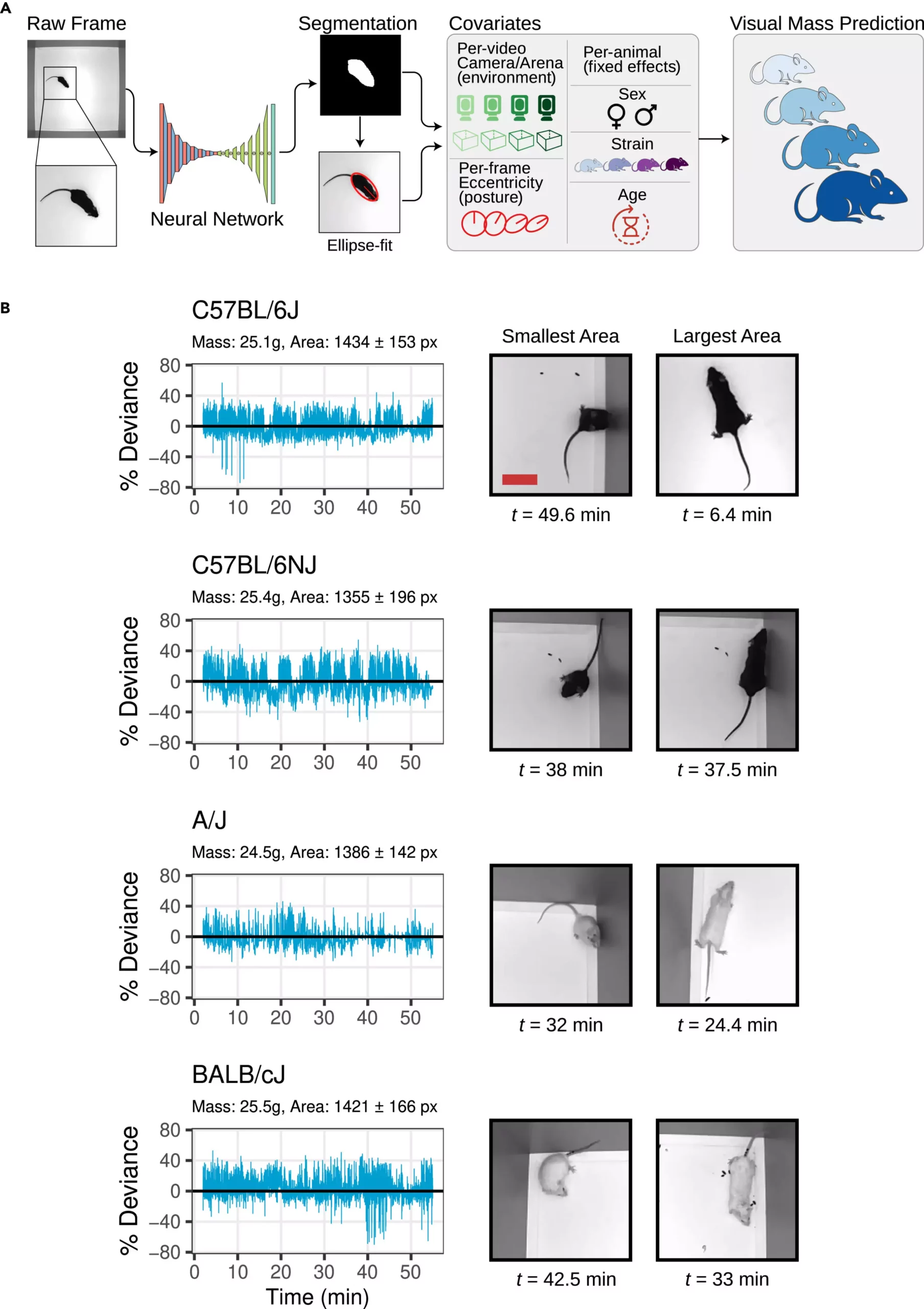In the world of biomedical research, the accurate measurement of body mass in mice is crucial for understanding overall health and predicting potential health issues. Traditionally, this has been done using scales that require the animals to be removed from their cages, causing stress and introducing variables that can impact research outcomes. However, a research team led by Jackson Laboratory (JAX) Associate Professor Vivek Kumar, Ph.D., has developed a non-intrusive method using computer vision technology to continuously measure mouse body mass with less than 5% error.
Kumar and his team of computational scientists and software engineers, including first author Malachy Guzman, turned to computer vision technology to analyze a large mouse video dataset. They utilized this technology to calculate body mass accurately while accounting for the various postures and behaviors of mice. The team faced challenges due to the dynamic nature of live mice, as they frequently change posture and shape. By incorporating multiple visual metrics, machine learning tools, and statistical modeling, they were able to achieve the desired level of accuracy.
The findings of the research, published in the Aug 7 advanced online issue of Patterns, provide a valuable resource for researchers in preclinical studies. This new method offers the advantage of detecting small changes in body mass over multiple days, which is vital for studies involving drug or genetic manipulations. Furthermore, it has the potential to serve as a diagnostic tool for general health monitoring and can be adapted for use in different experimental settings and with various organisms in the future.
One of the key advantages of this non-intrusive method is the reduction of stress on the mice, compared to traditional weighing techniques. By eliminating the need to remove the animals from their cages, the method improves the quality and reproducibility of research data. Additionally, the ability to continuously measure body mass allows researchers to track changes over time more accurately, enhancing the validity of experimental results. This method also opens up new possibilities for genetic and pharmacological experiments, expanding the scope of potential research applications.
The development of a non-intrusive method for measuring mouse body mass using computer vision technology represents a significant advancement in the field of biomedical research. By providing a more accurate and stress-free way to capture data, this method has the potential to revolutionize preclinical studies and improve the overall quality of research outcomes. Researchers can now look forward to more reliable and reproducible data, enabling them to make informed decisions and advancements in various areas of study.


Leave a Reply